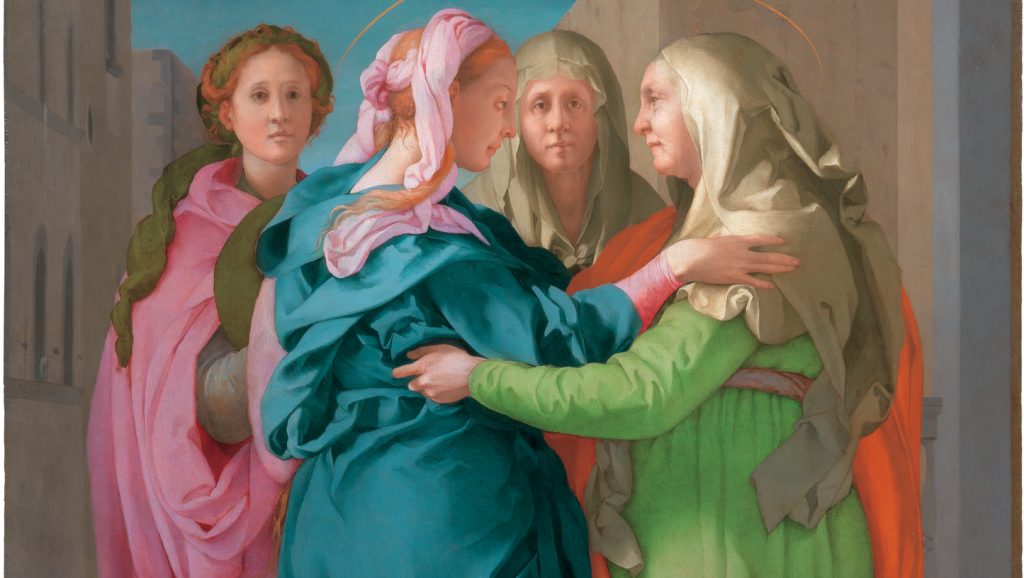Today the Church celebrates the Feast of the Visitation, when Mary went to visit her cousin Elizabeth, who was pregnant with John the Baptist.
The Gospels tell us that when John felt the presence of Jesus in Mary’s womb, he leaped for joy in his own mother’s womb. At this moment, John was cleansed of original sin, and filled with the grace of God.
The earliest evidence of this feast’s celebration in the Church is its adoption by the Franciscan Chapter in 1263, under advisement from St. Bonaventure. The feast spread to many churches, but was celebrated on various dates. On April 6, 1389, Pope Urban VI extended the feast to the entire Church, with the hope that Christ and Our Lady would put an end to the Great Schism that was threatening the Church at the time.
The feast was originally assigned to July 2, the day after the octave of St. John, which is estimated to be around the time that Mary returned to Nazareth. However, during the Schism, many opposing bishops refused to adopt the feast, until it was confirmed at the Council of Basle in 1441. Pius IX raised the feast to the rank of a double of the second class on May 13, 1850.

